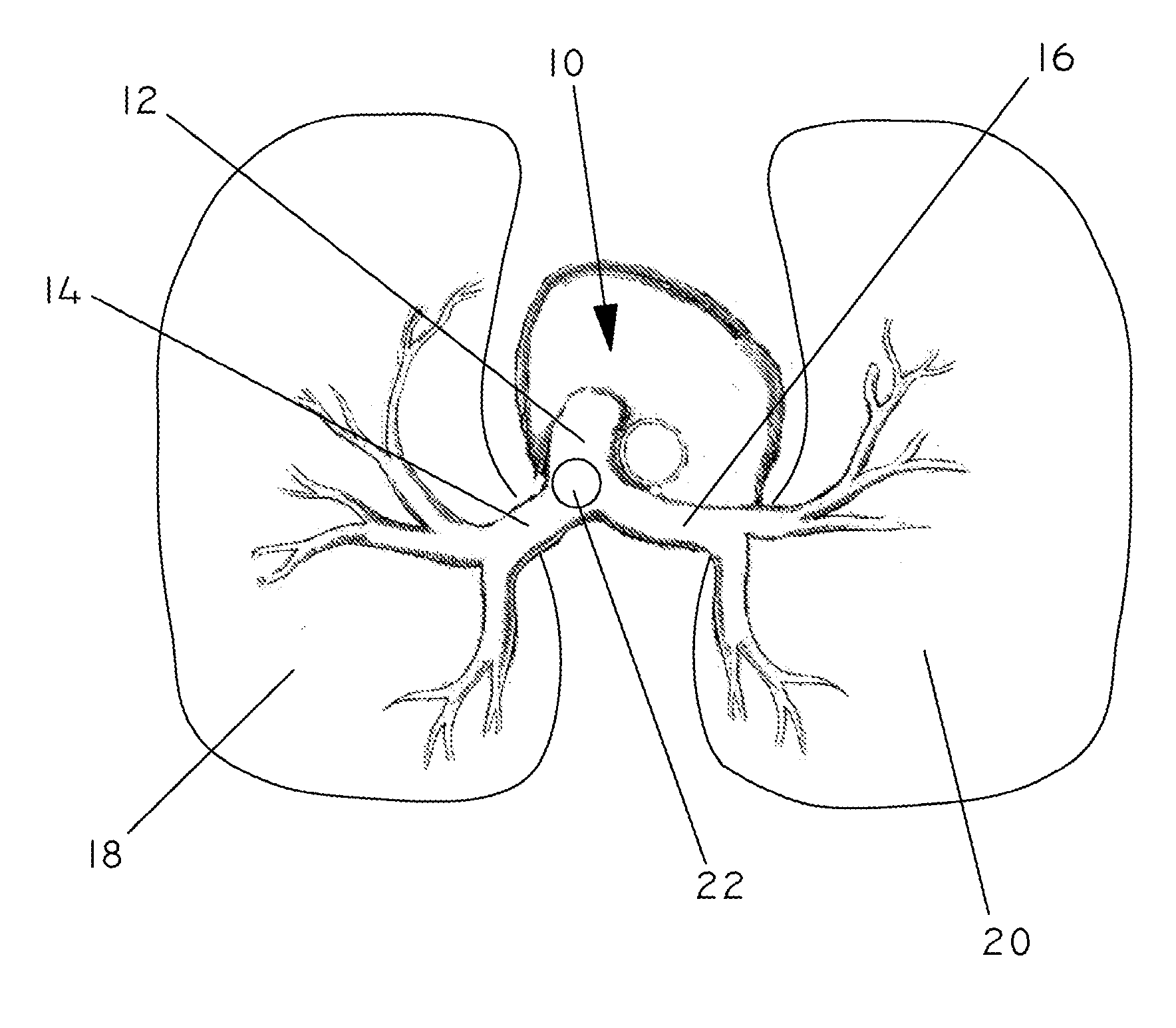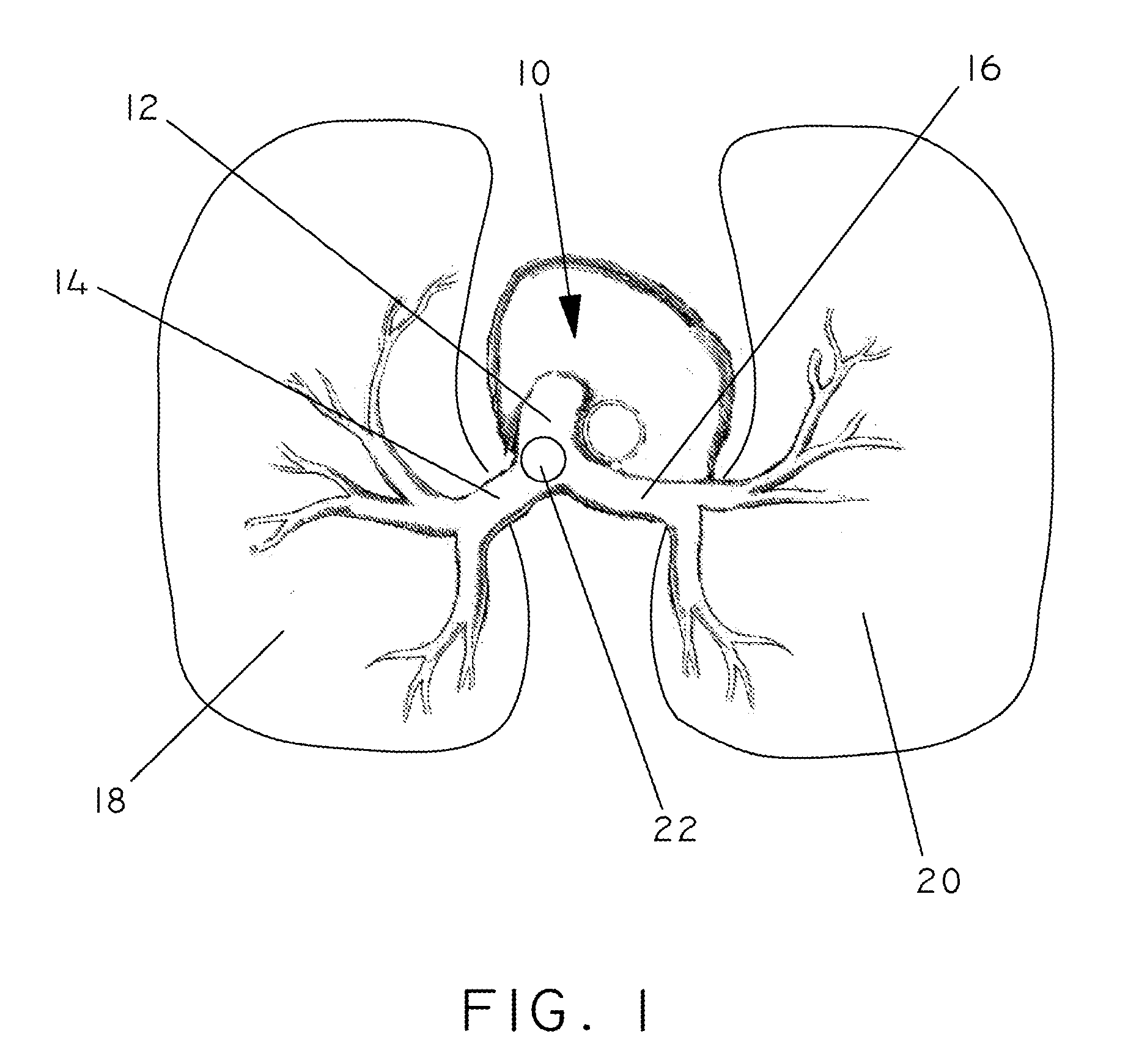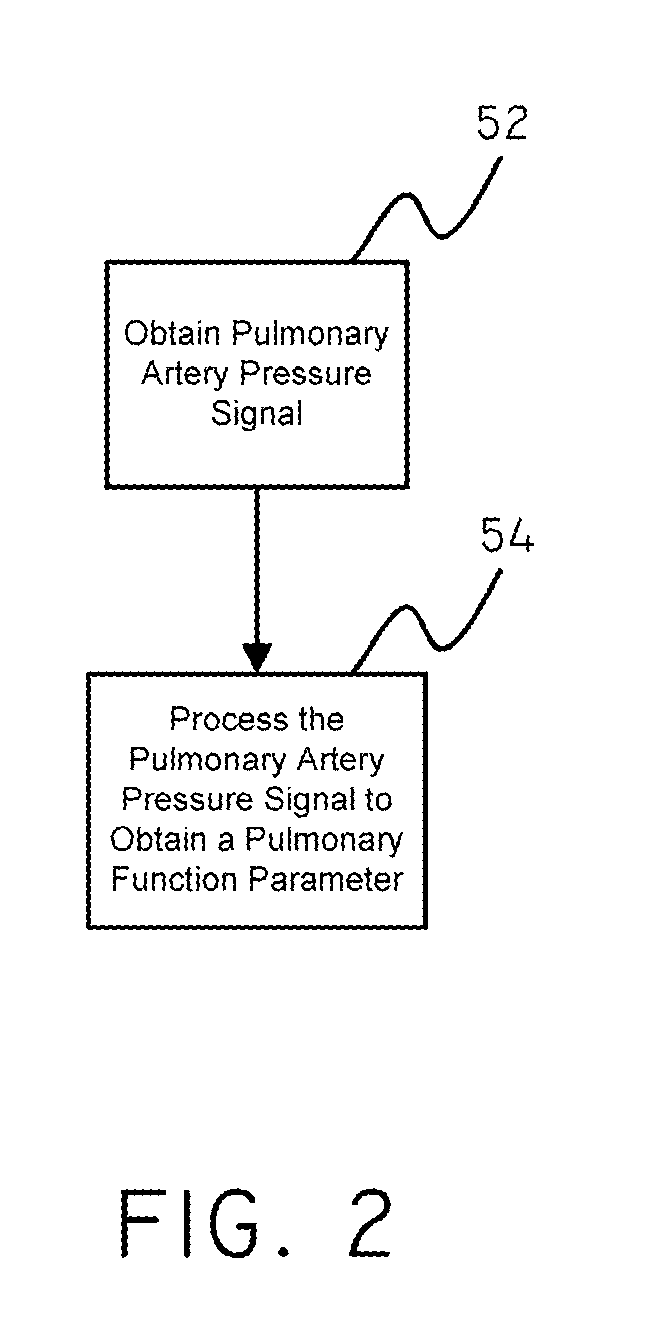Pulmonary Artery Pressure Signals And Methods of Using
a technology of pulmonary artery and pressure signal, which is applied in the field of using pulmonary artery pressure signal, can solve the problems that many existing techniques for monitoring the physiological state of patients cannot be well implemented in the context of implantable medical devices, and heart diseases remain the leading cause of death
- Summary
- Abstract
- Description
- Claims
- Application Information
AI Technical Summary
Problems solved by technology
Method used
Image
Examples
Embodiment Construction
[0030]Monitoring a patient's physiological condition is an important aspect in the diagnosis, management and treatment of various diseases. One approach to monitoring the physiological state of patients is the use of an implantable medical device that can detect physiological conditions. The use of an implantable medical device as a monitoring device can be advantageous because the monitoring can be performed as frequently as desired, without regard to the physical location of the patient. In addition, patient monitoring with an implanted medical device eliminates or reduces problems associated with patient compliance.
[0031]One aspect of physiological status is the pressure of fluids, such as blood, at various points in the vasculature of a patient. Frequently, blood pressure is indirectly estimated based on readings taken by care providers during clinical visits using a sphygmomanometer. During sphygmomanometry, typically, an occluding cuff is inflated to a pressure level above art...
PUM
 Login to View More
Login to View More Abstract
Description
Claims
Application Information
 Login to View More
Login to View More - R&D
- Intellectual Property
- Life Sciences
- Materials
- Tech Scout
- Unparalleled Data Quality
- Higher Quality Content
- 60% Fewer Hallucinations
Browse by: Latest US Patents, China's latest patents, Technical Efficacy Thesaurus, Application Domain, Technology Topic, Popular Technical Reports.
© 2025 PatSnap. All rights reserved.Legal|Privacy policy|Modern Slavery Act Transparency Statement|Sitemap|About US| Contact US: help@patsnap.com



